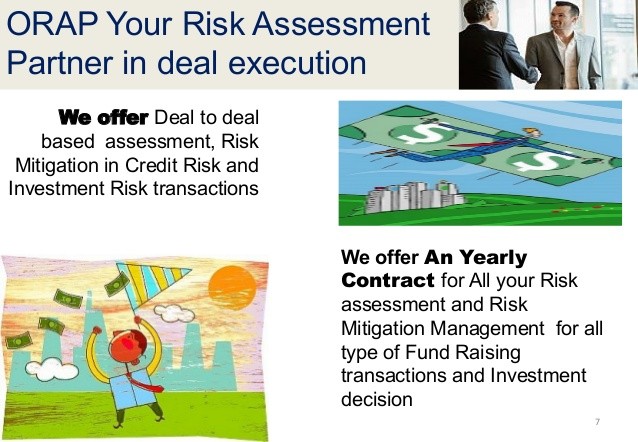7 Investment risks and how to deal with them
Post on: 24 Июнь, 2015 No Comment

T he fact is that you cannot get rich without taking risks. Risks and rewards go hand in hand; and, typically, higher the risk you take, higher the returns you can expect. In fact, the first major Zurich Axiom on risk says: Worry is not a sickness but a sign of health. If you are not worried, you are not risking enough. Then the minor axiom says: Always play for meaningful stakes.
The secret, in other words, is to take calculated risks, not reckless risks.
In financial terms, among other things, it implies the possibility of receiving lower than expected return, or not receiving any return at all, or even not getting your principal amount back.
Every investment opportunity carries some risks or the other. In some investments, a certain type of risk may be predominant, and others not so significant. A full understanding of the various important risks is essential for taking calculated risks and making sensible investment decisions.
Seven major risks are present in varying degrees in different types of investments.
This is the most frightening of all investment risks. The risk of non-payment refers to both the principal and the interest. For all unsecured loans, e.g. loans based on promissory notes, company deposits, etc. this risk is very high. Since there is no security attached, you can do nothing except, of course, go to a court when there is a default in refund of capital or payment of accrued interest.
Given the present circumstances of enormous delays in our legal systems, even if you do go to court and even win the case, you will still be left wondering who ended up being better off — you, the borrower, or your lawyer!
So, do look at the CRISIL / ICRA credit ratings for the company before you invest in company deposits or debentures.
Business risk
The market value of your investment in equity shares depends upon the performance of the company you invest in. If a company’s business suffers and the company does not perform well, the market value of your share can go down sharply.
This invariably happens in the case of shares of companies which hit the IPO market with issues at high premiums when the economy is in a good condition and the stock markets are bullish. Then if these companies could not deliver upon their promises, their share prices fall drastically.
When you invest money in commercial, industrial and business enterprises, there is always the possibility of failure of that business; and you may then get nothing, or very little, on a pro-rata basis in case of the firm’s bankruptcy.
A recent example of a banking company where investors were exposed to business risk was of Global Trust Bank. Global Trust Bank, promoted by Ramesh Gelli, slipped into serious problems towards the end of 2003 due to NPA-related issues.
However, the Reserve Bank of India’s [ Get Quote ] decision to merge it with Oriental Bank of Commerce [ Get Quote ] was timely. While this protected the interests of stakeholders such as depositors, employees, creditors and borrowers was protected, interests of investors, especially small investors were ignored and they lost their money.

The greatest risk of buying shares in many budding enterprises is the promoter himself, who by overstretching or swindling may ruin the business.
Liquidity risk
Money has only a limited value if it is not readily available to you as and when you need it. In financial jargon, the ready availability of money is called liquidity. An investment should not only be safe and profitable, but also reasonably liquid.
An asset or investment is said to be liquid if it can be converted into cash quickly, and with little loss in value. Liquidity risk refers to the possibility of the investor not being able to realize its value when required. This may happen either because the security cannot be sold in the market or prematurely terminated, or because the resultant loss in value may be unrealistically high.
Current and savings accounts in a bank, National Savings Certificates, actively traded equity shares and debentures, etc. are fairly liquid investments. In the case of a bank fixed deposit, you can raise loans up to 75% to 90% of the value of the deposit; and to that extent, it is a liquid investment.
Some banks offer attractive loan schemes against security of approved investments, like selected company shares, debentures, National Savings Certificates, Units, etc. Such options add to the liquidity of investments.
The relative liquidity of different investments is highlighted in Table 1.














